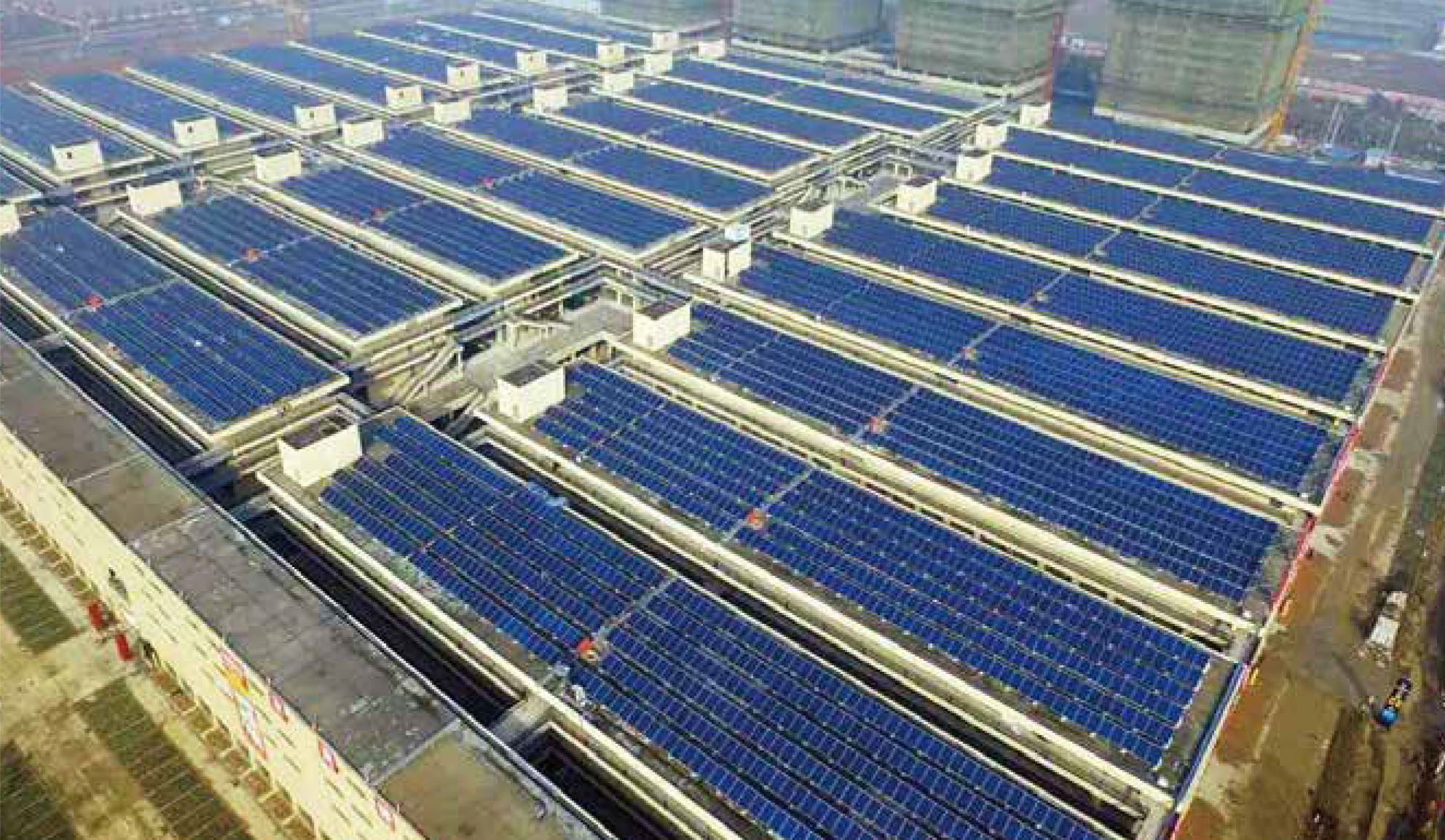工商业屋顶光伏工程是指在工业和商业建筑的屋顶上安装太阳能光伏系统,将太阳能转化为电能供应建筑物使用。以下是该工程的一般步骤:
Industrial and commercial rooftop photovoltaic engineering refers to the installation of solar photovoltaic systems on the roofs of industrial and commercial buildings, converting solar energy into electrical energy for use in buildings. The following are the general steps of the project:
需求评估和设计:
Needs assessment and design:
进行建筑物的能源需求评估,确定光伏系统的容量和产能需求。
Conduct an energy demand assessment of the building to determine the capacity and capacity requirements of the photovoltaic system.
根据屋顶结构和朝向、阴影情况等因素进行设计,确定光伏组件的布局和安装方式。
Design based on factors such as roof structure, orientation, and shading to determine the layout and installation method of photovoltaic modules.
屋顶准备:
Roof preparation:
检查屋顶的结构和稳定性,确保其能够承受光伏系统的重量和风荷载。
Check the structure and stability of the roof to ensure that it can withstand the weight and wind loads of the photovoltaic system.
清理屋顶表面,确保没有杂物或障碍物妨碍光伏组件的安装。
Clean the roof surface to ensure that there are no debris or obstacles hindering the installation of photovoltaic modules.

安装支架和固定系统:
Installation bracket and fixing system:
安装光伏组件支架系统,通常使用铝合金或钢材制作,确保稳固和耐久。
The installation of photovoltaic module support system is usually made of aluminum alloy or steel to ensure stability and durability.
使用螺栓、膨胀螺丝或其他固定装置将支架系统牢固地固定在屋顶上。
Use bolts, Wall plug, or other fixtures to firmly secure the support system to the roof.
安装光伏组件:
Installation of photovoltaic modules:
将光伏组件逐个安装在支架系统上,确保正确的方向和倾斜角度以大限度地吸收太阳能。
Install the photovoltaic modules one by one on the support system, ensuring the correct direction and tilt angle to maximize solar energy absorption.
连接光伏组件之间的电缆,确保电能的有效传输和连接性能。
Connect cables between photovoltaic modules to ensure effective energy transmission and connection performance.
安装逆变器和电气系统:
Installation of inverters and electrical systems:
安装逆变器,将光伏组件产生的直流电转换为交流电供电给建筑物使用。
Install an inverter to convert the direct current generated by photovoltaic modules into alternating current for power supply to the building.
连接逆变器与电网,并确保符合当地电气规范和安全标准。
Connect the inverter to the power grid and ensure compliance with local electrical regulations and safety standards.
测试和调试:
Testing and debugging:
对光伏系统进行测试,包括电气测试、电流和电压测试,确保系统正常运行和符合预期性能。
Conduct testing on the photovoltaic system, including electrical testing, current and voltage testing, to ensure that the system operates normally and meets expected performance.
进行系统调试和优化,确保光伏组件的佳输出和系统的高效运行。
Conduct system debugging and optimization to ensure optimal output of photovoltaic modules and efficient operation of the system.
运行和维护:
Operation and Maintenance:
监控光伏系统的运行状况,包括电力输出、系统效率等,并进行定期检查和维护。
Monitor the operational status of the photovoltaic system, including power output, system efficiency, etc., and conduct regular inspections and maintenance.
清洁光伏组件表面,清除灰尘、污垢和其他杂物,以保持系统的佳性能。
Clean the surface of photovoltaic modules, remove dust, dirt, and other debris to maintain the optimal performance of the system.
Thank you for reading. The source of this article is: Industrial and Commercial Photovoltaic Power Generation. For more information and questions, please click on: http://www.zdnygf.com We will continue to work hard to provide you with services. Thank you for your support!



 TEL:0531-82390078
TEL:0531-82390078 TEL:18805312017
TEL:18805312017 MAI:sdzdny001@163.com
MAI:sdzdny001@163.com 公司地址: 济南市历下区山大路157号
公司地址: 济南市历下区山大路157号 天合蓝天·山东种电
天合蓝天·山东种电 备案号:鲁ICP备17052940号-2
鲁公网安备37010202700164号
备案号:鲁ICP备17052940号-2
鲁公网安备37010202700164号
 网站地图|XML|TXT
网站地图|XML|TXT

